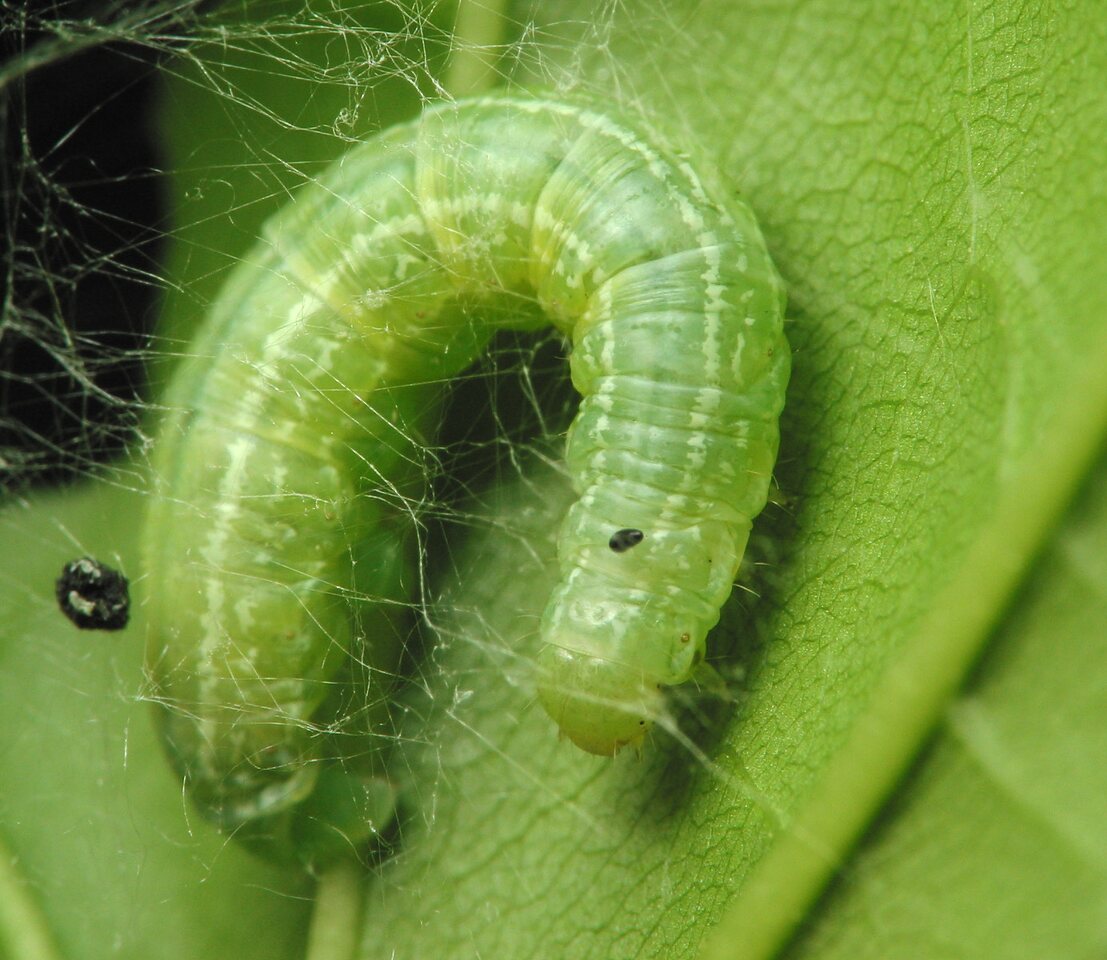
Operophtera brumata caterpillar · mažasis žiemsprindis, vikšras
parasite egg glued to the larva
- winter moth
- Kleiner Frostspanner
- mažasis žiemsprindis
- mazais salnsprīžmetis
- piędzik przedzimek
- en.wikipedia.org/wiki/Winter_moth
- naturespot.org.uk/species/winter-moth
- mke.lt: mažasis žiemsprindis
It is one of very few lepidopterans of temperate regions in which adults are active in late autumn and early winter. The adults use endothermy for movement in these cold temperatures. The female of this species is virtually wingless and cannot fly, but the male is fully winged and flies strongly. After the initial frosts of late fall, the females emerge from their pupa, walk to and up trees, there emitting pheromones in the evening to attract males. Fertilized, she ascends to lay, on average, around 100 eggs. Typically, the larger the female moth is the more eggs she lays.
Winter moth caterpillars emerge in early spring from egg masses laid near leaf buds . Recently hatched larvae feed on expanding leaf buds, often after having burrowed inside the bud, and later on foliage, for approximately six weeks. Sometimes the larvae occur in great numbers, reaching pest status and occasionally completely defoliating small trees. In addition to feeding on the tree where they hatched, young larvae will also product silk strands to be wind-blown to other trees. By mid-May the larvae descend to the ground.
Paplitęs Europoje, Artimuosiuose Rytuose, įsiveisė Šiaurės Amerikoje. Patino kūnas 25–28 mm ilgio, sparnai šviesiai pilki. Patelių sparnai sutrumpėję, jos neskraido. Vikšrai pavasarį graužia medžių lapus (klevus, lazdynus, ąžuolus, bukus, uosius, kriaušes, drebules, egles, vyšnias, gluosnius, šermukšnius, obelis ir kt.). Suaugėliai skraido rudenį, iki pat užsningant.
‥- tags
- larva, parasitism
- albums
- Insecta · vabzdžiai / Lepidoptera · drugiai / Geometridae · sprindžiai / Operophtera brumata · mažasis žiemsprindis
- Insecta · vabzdžiai / Lepidoptera · drugiai / Geometridae · sprindžiai / ~ Geometridae caterpillars · sprindžių vikšrai
- Insecta · vabzdžiai / Lepidoptera · drugiai / ~ Lepidoptera caterpillars · drugių vikšrai
0 comments
Add a comment